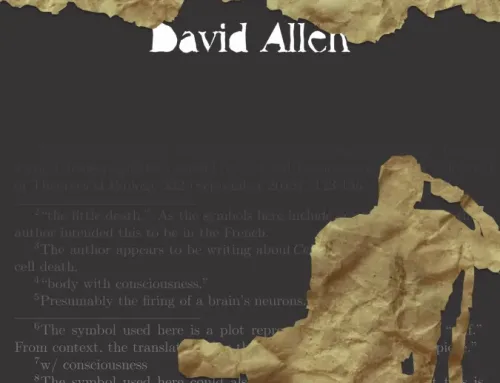A Forward to Insight
Ten years ago, I was fortunate to come across a book1Jacob Liberman, Take Off Your Glasses and See: A Mind/Body Approach to Expanding Your Eyesight and Insight that boasted methods to relieve me of my ocular coadjutors. I was spending the weekend alone at a colleague’s ski cabin with the promise of two full days of the sport. Unfortunately, the snowfall that Friday night transcended “excellent conditions” and left me with “cabin-ridden.” In a completely atypical fashion, I had failed to bring with me any reading material—forcing me to scrutinize the cabin’s few rotted shelves for a compelling read. It was on one of these shelves where I found Liberman’s book.
I must admit that, at the time, my incredulity as to the book’s claims had been inversely proportional to my ability to read even the fourth line of an eye chart unaided.2The author’s medical records indicate that the author had 20/40 vision before his vacation. All medical information is presented with permission from the author’s family. But my interest had been sufficiently piqued to begin reading the text with the aid of my glasses.
The author had claimed that my blurred vision was not simply due to the corporeal, but that I had to open up my “inner vision” to see more clearly. Were I unable to read a sign without my glasses, it was due to some subconscious abhorrence of its text. All words and possible permutations thereof were, in fact, already stored somewhere in my brain. Intuition, it seemed, could fill in hard lines where I saw only haze.3Editor’s Note: This is one of many words which the author has grossly misspelled. As for the others, it has been corrected.
It is important to note that I did not finish the text, per se. Having skimmed the first third, the rest was easily inferred. And, filling in the suggestions of its author with the substance of my intuition, I set out to practice the book’s methods in their entirety. This endeavor proved to be wholly successful, evidenced by the fact that I no longer wear eye correction.
My subconscious had proved to be a spring of information which could irrigate my wilted vision. To let those waters of my intuition be arrested at my eyesight would have been irrational—there was no reason why it could not do the same in the enrichment of my body’s other functions.
So, naturally, I considered in what area I might benefit most greatly from an analogous opening of my “inner vision.” As we promise to gain the most from that in which we are most learned, I immediately decided it best to exploit my profound knowledge of human psychology.4The author held a Ph.D in Psychology from Carlos Albizu University–San Juan. Dissertation title: People’s love for Dogs Tilting Their Heads as a Subgenre of YouTube: A Collective Case Study Approach
Already, much of our communication is non-verbal. It occurred to me that was I unsure as to the thoughts or intents of my interlocutor; it was due to some subconscious obfuscation of my detailed knowledge of human thought and emotions. All thought patterns and all possible emotions tied thereto were in my brain. I had come to the conclusion that, were I to again let flow my intuition, I should be able to “see” the thoughts of those with whom I spoke.
Adapting the methods found in Liberman’s book to the induction of nonverbal communication, I was not only able to better surmise the musings of others, but I began to literally hear them. (I had not considered these methods affecting my aural faculty as my previous experiment had affected my vision.) In fact, I have reached a point where, upon simply glimpsing someone, I can hear the whole of their thoughts and feel the sum of their emotions.
The following paper5The author’s paper was not found with this introduction. No journals have any records of its publication.
gives in great detail these methods and proof of their effectiveness. I have also included anecdotes of my own experience in practicing this approach to clairvoyance so as to make the paper more palatable to the reader. Please email me at —————6The author is now deceased. He was hit by a car., should you have any questions.
- 1Jacob Liberman, Take Off Your Glasses and See: A Mind/Body Approach to Expanding Your Eyesight and Insight
- 2The author’s medical records indicate that the author had 20/40 vision before his vacation. All medical information is presented with permission from the author’s family.
- 3Editor’s Note: This is one of many words which the author has grossly misspelled. As for the others, it has been corrected.
- 4The author held a Ph.D in Psychology from Carlos Albizu University–San Juan. Dissertation title: People’s love for Dogs Tilting Their Heads as a Subgenre of YouTube: A Collective Case Study Approach
- 5The author’s paper was not found with this introduction. No journals have any records of its publication.
- 6The author is now deceased. He was hit by a car.



Leave A Comment
You must be logged in to post a comment.